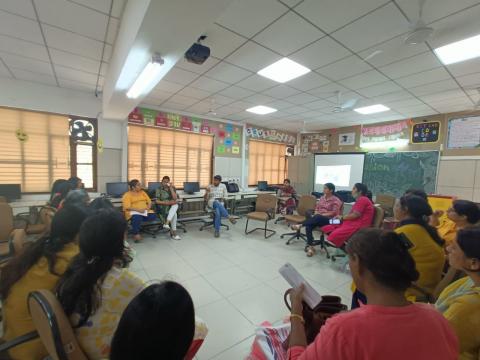
We are currently in a learning crisis?
“We are currently in a learning crisis: a large proportion of students currently in elementary school - estimated to be over 5 crores in number - have not attained foundational literacy and numeracy, i.e., the ability to read and comprehend basic text and the ability to carry out basic addition and subtraction with Indian numerals. (NEP 2020)”
In the paragraph mentioned above, we see the priority NEP places for the basic foundational skills. It also sets a deadline that by 2025, it has to be achieved at any cost. It further states
“Attaining foundational literacy and numeracy for all children will thus become an urgent national mission, with immediate measures to be taken on many fronts and with clear goals that will be attained in the short term (including that every student will attain foundational literacy and numeracy by Grade 3). The highest priority of the education system will be to achieve universal foundational literacy and numeracy in primary school by 2025.”
A large number of children not being able to read grade-appropriate text has been a critical issue of the Indian education system right from the beginning. In the beginning, bringing every child to school was a challenge and it took more than 5 decades to ensure that every child gets admitted to the school. However, a new phenomenon has emerged… Children are not able to read, write or do basic mathematical calculations at grade-appropriate levels. This is also directly linked to the retention of students in the schools. The more students feel that they are not able to cope-up with the required demands of the syllabus, the higher the probability is that they will drop out.
The NEP, 2020 has also recognized this problem and suggests a mechanism to address it in the shortest possible time. Though the means it suggests to address the issues is flawed. It suggests…Take the help of educated youth for this work. It shows how NEP doesn’t see teachers as professional experts and it ignores the requirement of the skills to teach at the primary level.
Mission Buniyad is the response!
Pratham brings the annual report known as ASER which highlights the learning gap of children across the nation and it draws the attention of the governments. Pratham brings great insight into this domain. Bridging the learning gap has been a focus of the Delhi government right from the beginning. Various initiatives of the Delhi Government such as Chunauti and Mission Buniyad gained significant success in making children read the grade-appropriate text. However, the pandemic has brought the success to ground zero again. For two years, most of the children were not able to get proper access to teaching. We don’t have the opportunity to build upon the gain we made in the previous years.
What is interesting to note is that every child of school-going age is enrolled in school, but every child cannot read. One of the reasons why we need specialized intervention is…Children fail to read and write because of their unpleasant experiences of learning during the developmental phase. If they lose confidence, they find it difficult to learn. This is a reason why a proper strategy is required. Based on the decades of research and expertise, Pratham has suggested a pedagogy that appears to be quite effective. It has been tested in different states and was found effective. It is named-Combined Activities for Maximized Learning (CAMAL). There are 6 components of CAMAL for Mission Buniyaad classes.
1. Story Telling/GapShap
2. Letter chart Activity
3. Drawing/writing
4. Game
5. Mind Mapping
6. Homework
It is believed that the variety of learning opportunities will help students with different learning abilities to understand and engage. There is enough focus on the fact that children should see learning as a fun activity, not as something so hard that they cannot do. I remember a passage from the novel, Shekhar ek Jeevani, In the novel, Agyeya writes…”The mind of a child is very tactile and the impression can be left deeper” This is a reason why the best methods of teaching and learning should be used at the foundational stage.
An interesting aspect of this campaign in Delhi is that the target has been spelt out clearly and the training and monitoring have also been designed tenaciously. In design, training, execution and monitoring, it's teachers who are involved, not the people from different ranks. I think this plays an extremely important role in the success of the program. Teachers who are in the design team, teachers who conduct training and teachers who monitor all have taken Mission Buniyad classes at different points in time. This looks like a perfect infusion of theory, practice and expertise. For instance, the Mission Buniyad manual for teachers defines reading…
When a child can
1. Read flawlessly
2. Understand Meaning
3. Connect with his/her experiences
This is an opportunity for the educators in Delhi to make this mission a success. A successful implementation will also help other states design their program effectively. For educators, teachers and administrators, Mission Buniyad is not merely a program to help students read and write, it is about ensuring the dignity of life. In the 21st century, can one live a dignified life without having the skills of reading and writing? It’s a mission of preparing our children to read the world through words.
- Log in to post comments
